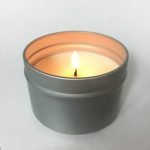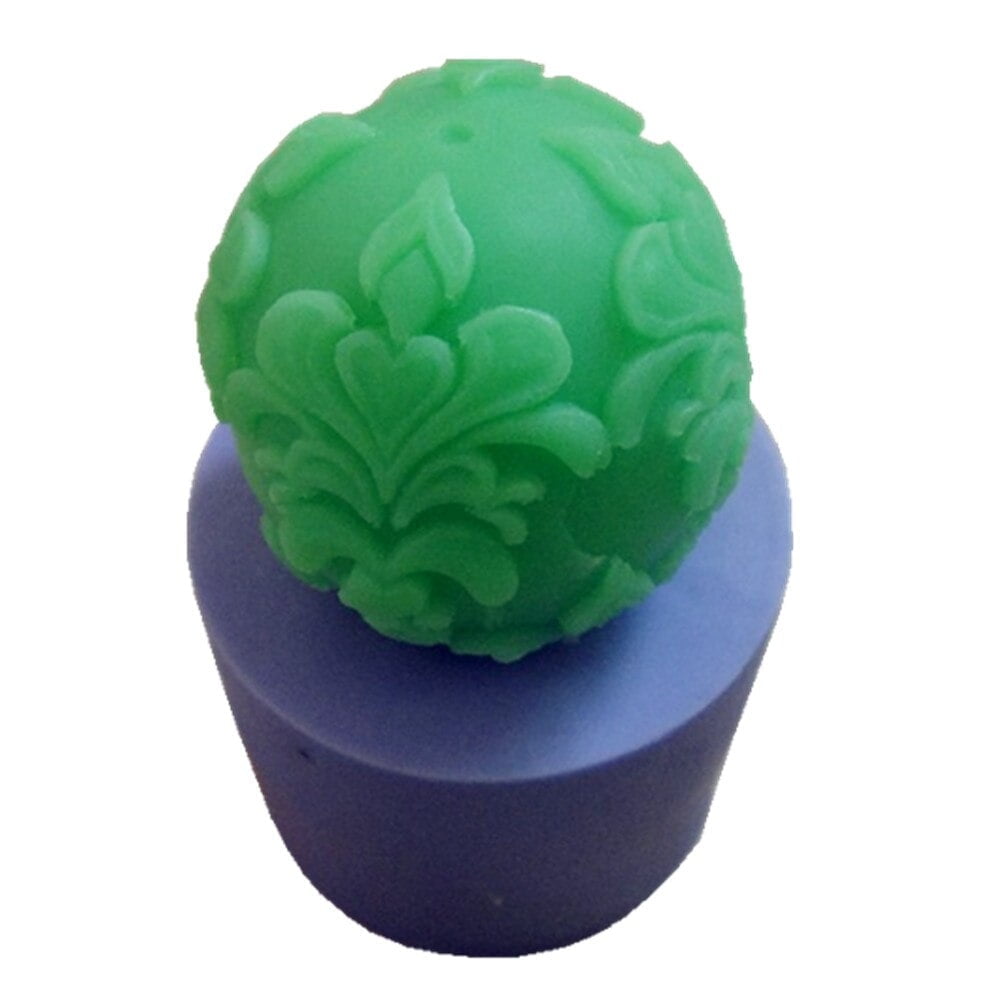The art of candle making has become increasingly popular in recent years, with more and more people embracing this therapeutic and creative hobby. Whether you’re looking to create a relaxing atmosphere in your home or give a personalized gift to a loved one, candle making offers endless possibilities for customization. This article will guide you through the candle making process, providing step-by-step instructions and helpful tips along the way.
In today’s fast-paced world, many individuals are beginning to appreciate the slow and intentional nature of candle making. The process itself is not only enjoyable but also offers numerous therapeutic benefits. From selecting the perfect fragrance to adding personalized touches with colors and designs, each aspect of candle making allows for self-expression and creativity. Plus, there is something deeply satisfying about being able to enjoy the flickering glow of a handmade candle that you crafted yourself.
Creating candles also provides an opportunity to personalize any space with unique scents and styles. Whether it’s filling your home with the soothing aroma of lavender or designating a specific scent for different rooms or occasions, candles add an intimate touch to any setting.
Additionally, handmade candles can make heartfelt gifts for birthdays, anniversaries, or other special occasions. The personal touch of creating something from scratch adds an extra layer of thoughtfulness that is sure to be appreciated by recipients.
With its rising popularity and countless benefits, it’s no wonder that more people are diving into the world of candle making. In the following sections of this article, we will explore everything you need to know to get started on your own candle-making journey.
From essential supplies to different wax options, fragrances and colors, as well as step-by-step procedures with pictures and troubleshooting tips – this guide will equip you with all the knowledge needed to unleash your creativity and enjoy the art of candle making.
Candle Making Supplies
Candle making is a popular and enjoyable craft that allows individuals to unleash their creativity while adding a personal touch to any space. Before diving into the candle making process, it’s essential to gather all the necessary supplies. This section will provide a comprehensive list of essential supplies for candle making and describe each item in detail, including why it is necessary.
Wax
The main ingredient in candle making is wax, which serves as the fuel for the flame. There are several types of wax available, each with its own characteristics. Soy wax is a popular choice due to its natural origin and clean-burning properties. Beeswax is another natural option known for its sweet aroma and long burn time. Paraffin wax is commonly used as it is affordable and readily available.
Wick
A wick is what sustains the flame in a candle, so choosing the right one is crucial. When selecting a wick, consider factors such as the type and size of your container or mold, as well as the desired burn time. Cotton braided wicks are commonly used for most candles, but larger candles may require multiple wicks or thicker wicks.
Containers or Molds
Containers or molds are needed to shape and hold your candles. The choice of container depends on personal preference and the type of candle being made. Mason jars, glass containers, tins, or even teacups can be used for container candles, while silicone or metal molds are suitable for molded candles.
Thermometer
A thermometer is essential for monitoring the temperature of your wax during melting and pouring stages. Maintaining precise temperatures ensures proper fragrance incorporation and optimal burn performance.
Double Boiler or Melting Pot
To melt your wax safely without direct heat exposure, a double boiler or a melting pot is necessary. This equipment prevents the wax from scorching or catching fire, ensuring a smooth and controlled melting process.
Fragrance and Colorants
To add personalized scents and tones to your candles, fragrance oils and colorants are essential. Select fragrances that complement the candle’s purpose or setting, such as lavender for relaxation or citrus for refreshment. Colorants can be in the form of liquid dyes, chips, or blocks to create vibrant or subtle hues.
Mixing Tools
Various mixing tools are needed to blend your wax, fragrance oils, and colorants thoroughly. These can include stirring spoons or sticks, whisk-like mixers, or even handheld electric mixers for larger batches.
Heat Source
A heat source is required to melt your wax, such as a stove burner or an electric hot plate specifically designed for candle making. Make sure you have a suitable heat source that offers temperature control and safety features.
By gathering these essential supplies before starting your candle making journey, you will be well-prepared to create beautiful and fragrant creations while enjoying the therapeutic benefits this craft brings.
Choosing the Right Wax
Choosing the right wax is a crucial step in candle making as it determines the overall quality, burn time, and scent throw of your candles. There are several types of wax to choose from, each with its own unique characteristics. In this section, we will explore the most common types of wax used in candle making and discuss their advantages and disadvantages.
Soy Wax
Soy wax is a popular choice among candle makers due to its natural composition and clean-burning properties. Made from soybean oil, this type of wax is renewable, biodegradable, and produces minimal soot when burned. Soy wax also has a longer burn time compared to other waxes, allowing you to enjoy your candles for a longer period. It has excellent fragrance retention and provides a smooth and creamy finish.
However, soy wax does have some drawbacks. It tends to have a softer texture which can make it more challenging to work with, especially in hotter temperatures. Additionally, soy wax may not hold intricate designs as well as other waxes due to its soft composition. Despite these limitations, soy wax remains a popular choice for those seeking eco-friendly and clean-burning candles.
Beeswax
Another natural option for candle making is beeswax, which is created by bees during honey production. Beeswax is known for its beautiful golden color and sweet honey-like scent. It has a longer burn time compared to other waxes and emits negative ions when burned, helping purify the air by neutralizing pollutants.
One advantage of using beeswax is that it has a higher melting point than other waxes, which means your candles will withstand warm environments better without melting too quickly. However, beeswax can be more expensive than other options due to its limited availability and the labor-intensive process involved in harvesting it from beehives.
Paraffin Wax
Paraffin wax is the most common type of wax used in commercial candle making. It is derived from petroleum and goes through a refining process to remove impurities. Paraffin wax has a low melting point, making it easy to work with and ideal for creating highly detailed candles.
One advantage of using paraffin wax is its wide availability and affordability, making it an excellent choice for beginners or those on a budget. However, it is important to note that paraffin wax does not have the same eco-friendly qualities as soy or beeswax. It may also produce more soot and potentially release harmful chemicals when burned at high temperatures.
Fragrance and Color
When it comes to candle making, fragrance and color are essential elements that can make your candles truly unique. The right fragrance can create a soothing ambiance or evoke a specific mood, while the color adds visual appeal and enhances the overall aesthetic of your candles. In this section, we will explore the importance of selecting the right fragrance and color for your candles and provide tips on how to choose scents and tones that complement their purpose or setting.
Choosing the right fragrance for your candles is crucial as it plays a significant role in creating the desired atmosphere. Whether you want to create a calming environment with lavender scent or a festive vibe with cinnamon, selecting fragrances that resonate with your intended setting can enhance the overall experience for yourself and others.
Consider the purpose of your candles – are they meant for relaxation, meditation, or holiday celebrations? This will help guide you in choosing scents that align with their intended use.
In addition to fragrances, color also plays an important role in candle making. The right choice of color can make candles more visually appealing and tie into their purpose or theme.
For example, if you want to create a romantic atmosphere for a dinner date, using warm colors like red or pink can be fitting. On the other hand, if you are looking to promote tranquility in a spa-like setting, using cool colors like blue or green may be more appropriate.
| Color | Meaning/Effect |
|---|---|
| White | Purity/Calmness |
| Red | Passion/Energy |
| Orange | Warmth/Creativity |
| Yellow | Happiness/Positivity |
| Green | Nature/Relaxation |
Remember, adding fragrance and color to your candles is an opportunity for self-expression and personalization. Whether you prefer earthy and natural scents or bold and vibrant colors, don’t be afraid to experiment and find combinations that truly speak to your tastes and preferences. In the next section, we will guide you through the step-by-step candle making procedure, where you can incorporate your chosen fragrances and colors to create your own personalized candles.

Step-by-Step Candle Making Procedure
Candle making is a fascinating and rewarding activity that allows you to create beautiful and personalized candles for your home or as gifts. While the process may seem intimidating at first, it can be broken down into simple steps that anyone can follow. In this section, we will guide you through the step-by-step candle making process, from melting wax to adding final touches.
1. Prepare Your Workspace:
Before you begin, set up a clean and organized workspace. Cover the area with newspaper or a plastic tablecloth to protect surfaces from any potential spills or drips. Gather all your supplies, including the wax, wicks, containers, fragrance oils, colorants, and tools like a double boiler or microwave-safe container for melting the wax.
2. Melting the Wax:
Begin by melting your chosen wax in a double boiler or microwave-safe container according to the manufacturer’s instructions. Be sure to heat the wax gradually and stir it regularly to ensure an even consistency. Once melted, remove it from heat and let it cool slightly before moving on to the next step.
3. Adding Fragrance and Color:
Once the wax has cooled slightly but is still liquid, it’s time to add fragrance oils and colorants if desired. Measure out your chosen scents and colorants according to recommended ratios or personal preferences. Stir them into the melted wax thoroughly until they are evenly distributed.
4. Preparing Wicks and Containers:
While your scented and colored wax cools further, prepare your wicks by attaching them securely at the bottom center of each container using adhesive or hot glue. Ensure that the wick is centered and straight.
5. Pouring the Wax:
Slowly pour the scented and colored wax into each prepared container, taking care not to spill or overflow. Leave a small amount of space at the top to allow for the final step of adding any decorative touches.
6. Adding Final Touches:
Before the wax completely solidifies, you can add some personal touches to your candles. This may include pressing dried flowers or herbs into the wax, embedding small objects like seashells, or creating patterns with different colored wax using a toothpick or skewer.
7. Allowing the Candles to Cool and Set:
Once you have added your final touches, allow the candles to cool and set undisturbed for several hours or until they are completely hardened. It’s important to be patient during this step to prevent any warping or cracking of the candles.
By following these simple steps, you can create your own stunning homemade candles that will fill your space with warmth and fragrance. Remember to exercise caution when handling hot wax and ensure proper ventilation in your workspace. Now that you know the candle making procedure from start to finish, it’s time to unleash your creativity and enjoy the art of candle making.
Troubleshooting
Candle making can be a delightful and fulfilling hobby, but like any craft, it is not without its challenges. As a beginner, it’s important to be prepared for potential obstacles that may arise during the candle making process. This section will discuss common candle making challenges and provide you with effective solutions to overcome them.
1. Sinking or Tunneling: One of the most frustrating issues that candle makers encounter is when the wax sinks in the center of the candle or forms a tunnel while burning. To prevent this, make sure to use a wick that is appropriate for the size and width of your candle.
Additionally, allow your candles to cool at room temperature slowly after pouring the melted wax. If you notice sinking or tunneling in your candles, try using a heat gun or hairdryer to gently melt the wax on the sides and level it out.
2. Frosting or Cracking: Frosting refers to an opaque white crystalline layer that forms on the surface of candles made with soy wax or beeswax. While some people find this effect desirable for certain types of candles, others prefer a smooth finish.
To reduce frosting, you can try lowering the pouring temperature or preheating your containers before pouring hot wax into them. On the other hand, cracking usually occurs when there is a sudden change in temperature during cooling. Avoid placing your newly poured candles in extremely cold areas; rather, let them cool at room temperature gradually.
3. Poor Scent Throw: Achieving a strong and long-lasting fragrance in your candles can sometimes be challenging. Begin by ensuring that you are using fragrance oils specifically designed for candle making as regular oils may not perform well when heated.
The type and amount of fragrance oil used also play crucial roles in scent throw. Experiment with different ratios until you achieve your desired strength but be careful not to exceed the recommended usage rate to avoid issues like poor burn performance and clogging of the wick.
By being aware of these common candle making challenges and equipping yourself with the knowledge and techniques to address them, you can ensure a smoother and more successful candle making experience. Remember that practice makes perfect, so don’t be discouraged if you encounter setbacks along the way. Troubleshooting is part of the learning process, and each challenge you overcome will only make your candle making skills grow stronger.
Candle Safety
Candle safety is of utmost importance when it comes to enjoying the ambiance and fragrance that candles provide. To ensure the safe usage of candles and prevent accidents, it is essential to follow certain techniques and guidelines. By implementing these practices, you can confidently enjoy the beauty of candles without worrying about potential dangers.
First and foremost, never leave a lit candle unattended. Always extinguish candles before leaving the room or going to sleep. It is crucial to place lit candles on a stable surface away from flammable materials such as curtains, bedding, books, or decorations. Keep them out of reach from children and pets who might accidentally knock them over or touch the flame.
Another important safety technique is to always use candle holders specifically designed for holding candles securely. These holders should be placed on heat-resistant surfaces to prevent any damage caused by heat transfer. If using multiple candles in one setting, make sure they are spaced apart adequately to avoid any potential fire hazards.
Additionally, it is vital to trim the wick before lighting a candle. A long wick can create a larger flame that may ignite nearby objects. Maintain a quarter-inch length for the wick for optimal burning performance and safety. Avoid burning candles near drafts that can cause uneven melting or unpredictably large flames.
| Technique | Description |
|---|---|
| Never leave a lit candle unattended | Leaving lit candles unsupervised increases the risk of fires |
| Place lit candles on stable surfaces away from flammable materials | Avoid placing them near curtains, bedding, books or decorations that could catch fire easily |
| Always use candle holders designed for secure placement | Using improper holders may lead to candles tipping over and causing fires |
| Trim the wick before lighting | Keep the wick length at a quarter-inch to prevent large flames and potential hazards |
| Avoid burning candles near drafts | Drafts can cause uneven melting and unexpectedly large flames, increasing the risk of accidents. |
Candle Making Tips and Tricks
Candle making is not only a popular hobby but also an art form that allows individuals to express their creativity and enhance their craftsmanship. In this section, we will explore some expert tips and tricks that will take your candle making skills to the next level.
One important tip from experienced candle makers is to experiment with different waxes and additives to create unique and high-quality candles. For example, adding a small amount of beeswax to soy wax can improve the burn time and scent throw of your candles. Additionally, using coconut oil or shea butter in your wax mixture can result in a smoother texture and a more luxurious feel.
Another key aspect of candle making is fragrance selection. To ensure a well-balanced scent in your candles, it is recommended to use fragrance oils specifically designed for candle making rather than essential oils. These fragrance oils are formulated to perform well in candles and are available in a wide range of scents.
When choosing fragrances, consider how they will complement the purpose or setting of your candles. For example, lavender or chamomile scents are great for relaxation candles while citrus scents work well for energizing or refreshing candles.
In addition to wax choice and fragrance selection, pay attention to the little details that can make a big difference in the appearance of your candles. To prevent the formation of air bubbles on the surface, gently tap the container after pouring the melted wax to release any trapped air. If you prefer a smooth finish on your candles, use a heat gun or hairdryer on low heat to eliminate any imperfections on the surface once the candle has cooled.
By incorporating these expert tips into your candle making process, you can elevate your craftsmanship and create beautiful, high-quality candles that you can be proud of. Remember that practice makes perfect, so don’t be afraid to experiment and try new techniques along the way. Whether you’re creating candles for yourself or as gifts for others, embrace the art of candle making, and enjoy the satisfaction of creating something truly special.
Conclusion
In conclusion, candle making is a popular and fulfilling hobby that allows individuals to unleash their creativity and enjoy the artistry of crafting their own candles. Throughout this article, we have explored the various aspects of candle making, from the supplies needed to the step-by-step procedure. We have also discussed the importance of choosing the right wax, fragrance, and color for your candles, as well as offering troubleshooting tips and safety guidelines.
Candle making provides numerous benefits beyond just creating beautiful decor pieces. It offers a therapeutic experience as individuals can express themselves artistically and find relaxation in the process. The personal touch that handmade candles bring to any space adds warmth and ambiance to create a cozy atmosphere.
We encourage readers to try their hand at candle making and discover the joy it brings. Whether you are a beginner or an experienced crafter, there is always room for creativity and improvement in this craft. With the knowledge gained from this article and the tips shared by experienced candle makers, you have all you need to embark on your candle-making journey.
So gather your supplies, select your wax, fragrance, and color, and start melting wax today. Unleash your creativity, experiment with different techniques, and enjoy the art of candle making as you create unique pieces that reflect your personal style. The possibilities are endless when it comes to candle making – let your imagination soar.

Welcome to my candle making blog! In this blog, I will be sharing my tips and tricks for making candles. I will also be sharing some of my favorite recipes.





